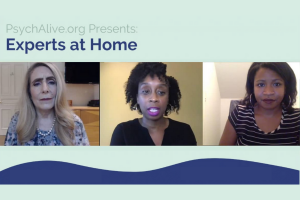How to Begin Again: From Wounds to Wisdom

We love the New Year because it gives a clean slate on which we can rewrite our future, if not our past. Our commitment to resolutions for change is often lofty, and filled with unreasonable expectations, and we have little understanding for our defeat when we fall off our new vision for ourselves.
We often take mistakes, defeat, pain as commentary on our worthiness; a mark against us that can never be erased. What if these marks were instead indicators of our wisdom, like the mark of good broken in leather, or the beachside stone beaten by the waves into a polished brilliance?
Interestingly, there now is much talk about how to cultivate being in the present moment. It is so difficult to stop our minds from anticipating the future, to rest in this moment, yet when we fall from grace, it seems as if there is no future. Our pain becomes solidified, and we determine our fate as doomed, unable to see anything other than this moment. The agony can lead to feelings of hopelessness that sadly can lead to giving up, from simply stopping our engagement with our lives by creating a protective shield that keeps us from our own feelings and from the connection with others, to the ultimate tragedy: literally ending our lives.
It is all a matter of our perception. Our perception is formed by our experience, memory, beliefs, and the meaning we create based upon these experiences. If we have not been given the adequate support which grows a resilience, which means we are strengthened by adversity, our perceptions may lead to seeing the glass half empty.
We can learn to cultivate new perceptions and renewed strength by creating a new relationship to our “failings”. I recently gave a talk that I had difficulty delivering. There were various elements that contributed to why it was difficult. I had to do last minute rewrites to fit into the limited time allotted, I was convinced I needed to have it memorized completely to avoid referencing my notes, and I was unable to prepare myself immediately prior to speaking, as I normally do. with voice and body exercises. In the end, my talk was slow and broken as I checked my notes to find my way, and I took twice as long as I should have. My perception was that I had failed. And my failing was not in the quiet of my personal life, but right there in front of an audience, witnessed by colleagues. Though I had received positive comments after the talk, my expectations, old beliefs, memories, and the meaning I gave to this, led me to feelings of shame.
Shame is becoming the wrong doing. I am the mistake or the failing versus I made a mistake or was unable to achieve a particular goal. The essence of shame is that there is something essentially wrong with us. Once I noticed this quality of shame, I immediately became aware of old patterns of thinking that had originated very early on in an excessively critical family system. This was not news; I have spent many years working directly with emotional patterns that were limiting. The news comes when present day experiences allow remnants of old negative beliefs to be revealed. Then, with this awareness, we can choose a response versus habitual reaction. It is up to us to decide how we will create the context that transforms the pain into possibility.
Shame then becomes an indicator of and the gateway to healing. The healing comes in re-informing the limited perception. This healing requires new supportive relationships that hold us in appreciation and love. This strengthens our system and reorients us to see what is right in us, and provides the roots that sustain us, like a tree whose branches bend and sometimes break in the storms, but all the while its trunk standing tall, supported by the interconnecting roots reaching into the depths of the earth, continuing to grow in the midst of difficulty.
Beginning with the relationship with ourselves, when we reach down into our bodies, beyond our thoughts and beliefs about ourselves, and let our striving drop for a moment, we can breathe into what we are experiencing. In our pain are elements of heartache, a kind of mourning for what we could not do, and this heartache can then lead us to what it is we long for. If we can allow the qualities of forgiveness and compassion to be the new relationship to our Self, the shame is released as we recognize our humanity. In this being human, we can begin to take less personally the mistakes along the way, and widen our perception to include our limited individual vulnerability and the larger picture beyond just ourselves. With this new direction of attention we can then refocus our intention. My intention was to inform and inspire with my talk. In recognizing the pure pain of getting in the way of fully doing this, I could let go the unnecessary suffering of negative beliefs about my personhood, and get to the business of clearly looking at what skills I could improve, what great “learnings” I had found in my missing the mark, and practice new ways of communicating that could accent my longing to inspire. I became invigorated by my “failing” and was readied to begin again.
Beginning again is always an option. It sounds simple, but inquire into your own experience– whether it is with a new exercise routine or diet, a resolve to meditate or have a writing practice or be on time, or a promise of relating in kinder ways with your partner–what happens when you miss a day? Do rigid ideas of how you “should” do something, the black and white thinking and unforgiveness, get in the way of simply beginning again? Like the great Nike ad, “just do it” can cut through incessant thinking about failing to do it just right, and we can ‘just do it’ imperfectly.
There is a practice of “Beginning Anew” that I learned while studying with Thich Nhat Hanh , a peacemaker and human rights advocate nominated for the Nobel Peace Prize by Martin Luther King. It was presented as a way of working with conflict within relationship with another. Step one is to create a Mindful atmosphere both externally and internally, Step two is to express thanks to the other for who they are or what they have done (sounds easy, but imagine how angry you are with someone, this is the last thing you want to do), Step three is to express your apology for how you may have caused harm in the relationship (even harder to do, to admit fault when your eyes are peeled on what is the fault of the other), and Step four is to then express the pain you feel when the other does whatever the other does, and what your need is (now you are getting to what you wanted to express to begin with but because you are softened in relationship to yourself and the heart of the other , the communication comes in a non-injurious way)
My suggestion is to use this format of Beginning Anew for ourselves.
- Create Mindfulness in ourselves (the quality of attention that is open, accepting, curious, non judging—using breath and an embodied practice)
- Offer appreciation for what we have done
- Offer our own mourning for how we have not aligned with our intention
- Express what we long for, rooted in our strength, acknowledge what we might be able to change
When we feel defeated, fail to meet our own expectations, or have been unable to keep to our new resolution for change, it is not the end, but rather, the beginning of creating new perspectives that allow the possibility to open to and approach life as it is, as we are. It is the courageous heart that lives in imperfection, staying open to the vulnerability that brings forth the failings and the successes.
It is the willingness to be exposed to the light and the elements which allows our ripening and integration. Like the tree stripped of its leaves in winter, exposed, waiting, breathing the sunlight from above and the nutrients from below, letting the storms reveal both its vulnerability and its strength to restore with new buds of life.
Copyright 2012 Diane Renz, L.P.C., Your Gateway to Healing, Inc.
Tags: clean slate, healing, new beginning, new relationships









Leave a Reply